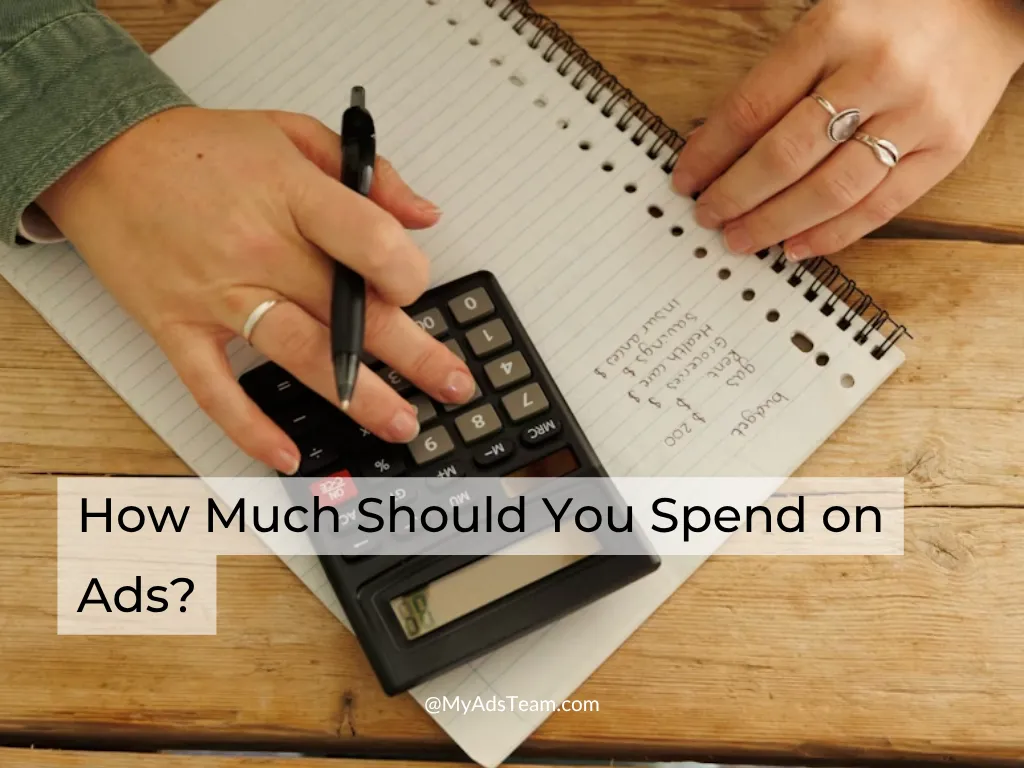
How to Set the Right Ad Budget for Your Small Business
How Much Should You Spend on Ads? (The No-BS Guide for Small Businesses)
Let’s cut straight to it: figuring out how much to spend on ads feels a bit like trying to guess how much gas you’ll need for a road trip without knowing the distance.
Spend too little? You’ll stall before you hit the highway.
Spend too much without a plan? You’re just lighting money on fire at every stop sign.
So how do you find the right budget for ads? One that actually brings in leads, makes sense for your business size, and doesn’t require a second mortgage?
Let’s break it down.
First: Ads Are an Investment, Not a Donation
Ads are a tool. They work if you use them right.
Your budget needs to be enough to test, learn, and improve. If $500 won't give you enough data to know what's working, it’s not enough.
The goal isn’t to spend big. It’s to spend smart.
So, How Much Should You Actually Spend?
Here’s a simple framework we use at My Ads Team:
Start with Your Goal
Want 10 new leads a month?
Want to generate $5,000 in sales?
Great. Now work backward. If each lead costs you $25, and you want 10 leads, your ad budget should be around $250/month.
Know Your Numbers
Cost Per Click (CPC): What does a click typically cost in your industry?
Conversion Rate: What percentage of those clicks turn into leads or sales?
Customer Value: How much is each new customer worth to your business?
And here’s a reality check: most businesses don’t know these numbers starting out, and that’s totally okay. The initial money you put into ads isn’t just about making sales right away. You’re also buying the data. That means learning your true Cost Per Click (CPC), what it costs to acquire a customer, and how well your funnel performs.
Once you’ve got real numbers, we can fine-tune your strategy to make every dollar work harder.
If a customer brings in $1,000 and you spent $200 to get them, that’s a win. But if your ads cost $300 per lead and your product is $50... we need to chat.
Pick a Starting Budget That’s Manageable but Meaningful
For most small businesses, this is between $500 to $1,500/month. But this depends on your industry, how competitive it is, and the overall customer value. It tends to cost more to bring in a high-ticket customer than to make a low-value sale.
It’s enough to gather data, test what works, and start generating results.
Not All Ads Are Created Equal 🌟
Your ad budget should align with why you're advertising. Here’s a breakdown:
1. Event Marketing
Launching or promoting an event? You're basically hosting a party, and you need invites, venue, and buzz.
Budget rule of thumb: Allocate 10 to 20% of your total marketing budget to event promotion.
Tip: Target local interests and use countdown ads to build urgency. Think invitations + follow-ups, like nurturing event RSVPs.
2. Product Marketing
Selling a physical or digital product? You need ads to educate, excite, and convert browsers into buyers.
Budget rule of thumb: Companies typically allocate 5 to 10% of revenue to overall marketing. For product-heavy businesses, aim for ~8%.
Tip: Use dynamic product ads with high-quality visuals. Start small, measure Cost Per Acquisition (CPA), then scale what converts.
3. Service Marketing
Offering a service like consulting, contracting, or therapy? You’re selling trust and outcomes, not items.
Budget rule of thumb: B2B services generally spend around 6 to 12% of revenue on marketing. Start at ~6% and adjust based on lead volume and lifetime customer value.
Tip: Focus on ads that highlight testimonials, case studies, and local targeting. Your landing page should build credibility fast. Adding in a video can help with that.
Budgeting Like a Rockstar
Assess your current data. Track campaign performance and ROI so you know what’s working and what’s draining your budget.
Go channel by channel. Google search ads are great for reaching people who are searching specifically for your product or service and ready to buy, while display, social, and video ads build awareness and retargeting opportunities. Social ads are disruptive, in that people didn’t go on to Facebook, Instagram, TikTok, or Snapchat to buy anything and our ads are disrupting their experience—hopefully in a good way!
Be ready to pivot. Use monthly or quarterly budgets with built-in flexibility to scale up channels that are working and cut those that aren't.
Watch trends carefully. Explore emerging tactics like AI-enhanced ads or new platforms, but keep an eye on how they impact ROI.
✍️ How This Shapes Our Halifax Approach
Rock-solid tracking comes first. We set you up to know exactly which ads are working, not guessing.
Mix channels smartly. If one ads platform such as Instagram or Google brings in most of your leads, we’ll target that, but also layer other channels strategically.
Plan for flexibility. Budget in monthly cycles so we can double down on top performers quickly.
Stay agile. If something new looks promising (e.g. local video ads or retargeting tools), we can test it in a low-risk way.
Avoid the Rookie Mistake: Setting It and Forgetting It
Too many business owners throw money at ads like it’s a wishing well. They set up a campaign, cross their fingers, and wait.
This is not a strategy.
Real success with ads means:
Testing different hooks
Testing different audiences
Writing stronger ad copy
Optimizing landing pages
Watching the data and using it to inform your next steps
That’s why we always say: Don’t just spend more. Spend smarter.
What If You’re on a Super Tight Budget?
We get it. Not every business has $1,000/month to test ads. That’s okay.
If you’re working with less, here’s what we recommend:
Focus on one platform. And we’ll advise you on the best one for your business. Don’t try to run Google, Facebook, and LinkedIn ads at once.
Laser in on one service or offer. Make sure every dollar is working toward a specific, measurable goal.
Get the targeting right. We want to make sure your ideal customers and clients are seeing your ads and not everybody else.
The Bottom Line
There’s no one-size-fits-all budget for ads. But there is a right-sized budget for your business.
Start with your goals. Let’s figure out your numbers. And make sure your budget is big enough to get real insights, but smart enough to avoid waste.
And if you’re not sure where to start? That’s exactly what we’re here for.
Curious what a better ad budget could look like? Let’s chat. We’ll look at your business, your goals, and your current setup to recommend the best budget and ad approach for you.
Because your ad spend shouldn’t be a gamble. It should be a growth strategy.

